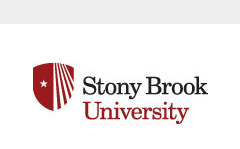Document Type
Article
Publication Date
2011
Keywords
New York City, sewage treatment, water quality, storm water, public water, history, technology development
Abstract
Henry Hudson first sailed toNew Yorkharbor 400 years ago. Since then,New York Cityhas both affected and been affected by water quality in greaterNew YorkHarbor. In this paper, we focus on sewers, sewerage, and sewage treatment inManhattanand their effects on theHudson River. It is clear that feedbacks among drinking water quality and quantity, population, public perceptions, regulations, and estuarine water quality exist, although their strength and character have varied over time. Early land uses damaged local water supplies found on ManhattanIsland. New Yorkthen began to exploit the large fresh water resources available to its north, which helped the City to expand more rapidly. Water availability also allowed for water carriage sanitary practices, increasing discharges of wastes through a growing sewer network into local waters. The discharge of wastes degraded water quality, affecting natural resources in the harbor. Untreated wastes led to disease from contaminated seafood, and also more generalized effects on public health. Overall, New Yorklifestyles became largely detached from its shoreline, partly due to the industrial character of the waterfront, and partly because of odors and visual blight from pollution. Growing public distaste over poor harbor water quality, especially in the early 20th century, led to some sewage treatment. More and more comprehensive treatment followed regulatory and legal actions, beginning in mid-twentieth century. Concurrently, maritime commerce declined, and the waterfront became underutilized. However, in the twenty-first century, natural resources are recovering, andNew York City citizens once again flock to the shores of theHudson River, to new and revitalized parks, new areas of development and older areas undergoing transformation, and into the harbor, now largely cleaned of its fouling from sanitary waste disposal. Today New York City public life has a much greater orientation toward the waterfront, which certainly was fostered by improved harbor water quality, and the opportunities for growth that were available with the disappearance of the City’s maritime industries. Thus, there has been a complicated relationship between the City and its rivers and harbor. One aspect has been continuing use of local water bodies as receptacles for wastes, which has benefitted those living in the City. Gaining these benefits has had continuing costs, however. Marine resources were damaged and some were lost, and quality of life on land was affected. Trying to undo the impacts, which has required great effort and much capital, has been hampered by technology decisions that appear suboptimal with the advantage of more than 100 years of hindsight. Still, modern sewage treatment, initiated by local efforts and concerns, but spurred on to completion by the forces unleashed by the great environmental awakening of the 1960s and 1970s, has made it possible for the citizens of New York to again fish, boat, and even swim in City waters.
Recommended Citation
Tonjes, David J.; O'Connell, Christine; Aphale, Omkar; and Swanson, R. Lawrence, "HUMAN SANITARY WASTES AND WASTE TREATMENT IN NEW YORK CITY" (2011). Technology & Society Faculty Publications. 13.
https://commons.library.stonybrook.edu/techsoc-articles/13
Included in
Civil Engineering Commons, Environmental Engineering Commons, Environmental Health and Protection Commons, Environmental Indicators and Impact Assessment Commons, Environmental Monitoring Commons, Environmental Policy Commons, Infrastructure Commons, Natural Resources Management and Policy Commons, Oceanography Commons, Public Administration Commons, Science and Technology Policy Commons, Sustainability Commons, Urban Studies Commons, Water Resource Management Commons

Comments
Published as pp. 219-232 in:
Henshaw, R. (ed.). Environmental History of the Hudson River: Human Uses that Changed the Ecology; Ecology that Changed Human Uses. SUNY Press. 376 pp.